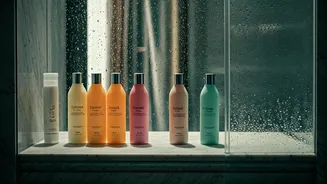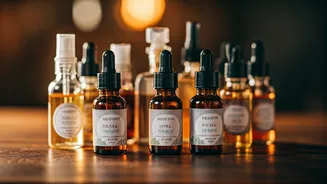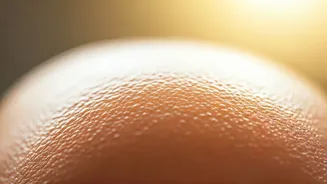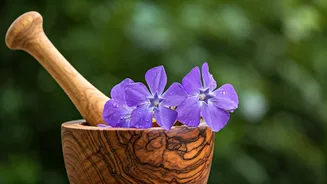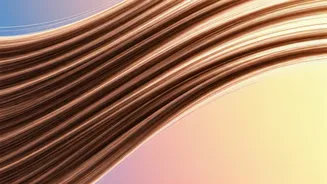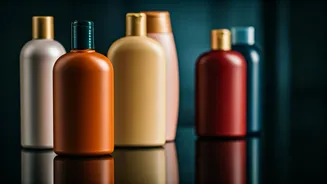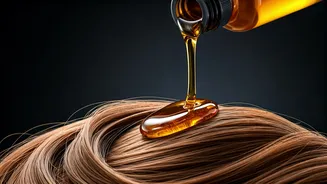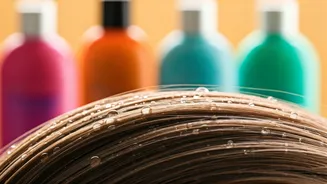Understanding Conditioner's Role
Conditioners play a crucial role in maintaining healthy and manageable hair. Following shampooing, hair cuticles are often raised, which can lead to tangling
and loss of moisture. Conditioners work to smooth down these cuticles, trapping moisture within the hair shaft, and thus enhancing the hair's overall elasticity and reducing breakage. Regular use can significantly improve hair's texture, making it softer, shinier, and easier to style. They also create a protective barrier against environmental damage, such as sun exposure and pollution. Conditioners are formulated with ingredients that replenish the lipids and proteins lost during shampooing, crucial for hair health. The specific benefits vary depending on the product type, but the fundamental goal remains the same: to restore and maintain the hair's natural balance and vitality. This process is key in preventing dryness and promoting long-term hair health and luster.
Conditioner Types Explained
Conditioners come in a variety of forms, each designed to address specific hair needs and textures. Rinse-out conditioners are the most common type, applied after shampooing and then rinsed off. These provide basic conditioning, detangling, and moisture. Leave-in conditioners are applied to wet or dry hair and are not rinsed out. They offer continuous hydration, protect against heat styling, and can help manage frizz. Deep conditioners, or hair masks, are formulated with highly concentrated ingredients and designed for intense hydration and repair. They are left on the hair for longer periods, often with heat, to allow for deeper penetration. Clarifying conditioners are used occasionally to remove build-up from styling products, hard water minerals, or chlorine. Understanding these different types allows you to select the product best suited for your hair's unique requirements, whether it's battling dryness, seeking volume, or protecting color.
Matching Conditioner to Hair
Choosing the right conditioner requires understanding your hair's specific needs. For dry or damaged hair, look for conditioners rich in moisturizing ingredients like shea butter, argan oil, or hyaluronic acid. These help replenish lost moisture and restore elasticity. If you have oily hair, opt for lightweight conditioners that won't weigh your hair down, such as those with tea tree oil or aloe vera, which can help balance oil production. For fine hair, choose volumizing conditioners that add body without adding weight; ingredients like proteins and collagen can help with this. Color-treated hair benefits from conditioners that protect against color fade; look for products with UV filters and antioxidants. Curly hair thrives on conditioners that provide intense hydration and definition; ingredients like coconut oil or glycerin can help define and moisturize curls. By considering your hair type and specific concerns, you can tailor your conditioner choice for optimal results.
Application Techniques for Best Results
Proper application is key to maximizing the benefits of your conditioner. Start by shampooing your hair thoroughly to remove dirt and product build-up. Then, squeeze excess water from your hair before applying conditioner. This allows the conditioner to penetrate the hair shaft more effectively. Apply the conditioner to the mid-lengths and ends of your hair, avoiding the scalp unless you have dry roots. This prevents your scalp from becoming greasy. Use a wide-tooth comb to distribute the conditioner evenly, ensuring that every strand is coated. For rinse-out conditioners, leave them on for the time specified on the product label, usually 2-3 minutes. For deep conditioners or hair masks, follow the product instructions, which may involve longer application times and sometimes heat. Rinse thoroughly with cool water to seal the hair cuticles, which helps lock in moisture and add shine. Consistent and careful application ensures that your hair receives the full benefits of the chosen conditioner.
Ingredients to Seek Out
Understanding the ingredients in your conditioner can help you make informed choices. Humectants, such as glycerin and honey, attract and retain moisture. Emollients, like shea butter and oils, smooth the hair cuticle and add shine. Proteins, such as keratin and collagen, strengthen the hair structure. Silicones create a smooth, detangled feel, but can sometimes lead to build-up, so consider the frequency of their use. Ceramides help repair the hair's protective layer, improving its resilience. Antioxidants, like vitamin E and green tea extract, protect hair from environmental damage. Natural oils, such as argan, coconut, and jojoba, provide nourishment and shine. When selecting a conditioner, consider your hair type and goals. Look for products that feature a combination of these beneficial ingredients to achieve the desired results.
